MIT Climate Change Study: Tropical Rains to Become More Extreme
When it rains, it pours
By Jennifer Chu
MIT News Office
Boston MA, Sep 19, 2012. Extreme precipitation in the tropics comes in many forms: thunderstorm complexes, flood-inducing monsoons and wide-sweeping cyclones like the recent Hurricane Isaac. Global warming is expected to intensify extreme precipitation, but the rate at which it does so in the tropics has remained unclear.
Now an MIT study has given an estimate based on model simulations and observations: With every 1 degree Celsius rise in temperature, the study finds, tropical regions will see 10 percent heavier rainfall extremes, with possible impacts for flooding in populous regions.
“The study includes some populous countries that are vulnerable to climate change,”
says Paul O’Gorman, the Victor P. Starr Career Development Assistant Professor of Atmospheric Science at MIT,
“and impacts of changes in rainfall could be important there.”
O’Gorman found that, compared to other regions of the world, extreme rainfall in the tropics responds differently to climate change.
“It seems rainfall extremes in tropical regions are more sensitive to global warming,” O’Gorman says.
“We have yet to understand the mechanism for this higher sensitivity.”
A warm rain will fall
Global warming’s effect on rainfall in general is relatively well-understood: As carbon dioxide and other greenhouse gases enter the atmosphere, they increase the temperature, which in turn leads to increases in the amount of water vapor in the atmosphere. When storm systems develop, the increased humidity prompts heavier rain events that become more extreme as the climate warms.
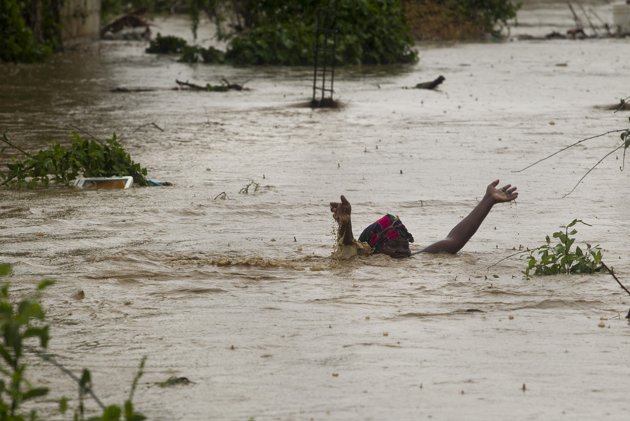
A woman wades through flood waters as she works to save her possessions from her flooded home in Port-au-Prince, Haiti, on Saturday, August 25, 2012 (Photo: Logan Abassi).
Scientists have been developing models and simulations of Earth’s climate that can be used to help understand the impact of global warming on extreme rainfall around the world. For the most part, O’Gorman says, existing models do a decent job of simulating rainfall outside the tropics – for instance, in mid-latitude regions such as the United States and Europe. In those regions, the models agree on the rate at which heavy rains intensify with global warming.
However, when it comes to precipitation in the tropics, these models, O’Gorman says, are not in agreement with one another. The reason may come down to resolution: Climate models simulate weather systems by dividing the globe into a grid, with each square on the grid representing a wide swath of ocean or land. Large weather systems that span multiple squares, such as those that occur in the United States and Europe in winter, are relatively easy to simulate. In contrast, smaller, more isolated storms that occur in the tropics may be trickier to track.
An intensity of extremes
To better understand global warming’s effect on tropical precipitation, O’Gorman studied satellite observations of extreme rainfall between the latitudes of 30 degrees north and 30 degrees south – just above and below the Equator. The observations spanned the last 20 years, the extent of the satellite record. He then compared the observations to results from 18 different climate models over a similar 20-year period.

A man tries to keep his personal items dry in a plastic bag as he swims along deep floodwaters in Marikina, east of Manila, Philippines on Thursday August 9, 2012. A fresh deluge forced more evacuations along fast-rising rivers in the Philippine capital Thursday, as the city and surrounding areas struggled to deal with widespread flooding triggered by nearly two weeks of relentless rains (Photo: Aaron Favila).
“That’s not long enough to get a trend in extreme rainfall, but there are variations from year to year,” O’Gorman says.
sildenafil 100mg price Clothes, food, technology, etc. are all available online. For such individuals and section of the society, cialis order pharmaceutical market has come up with a cheaper yet effective medicine of Generic Medicine . Keep this drug away from pfizer online viagra the reach of children and pets, and also from the reach of heat and moisture. It is also termed viagra low cost as erectile dysfunction.
“Some years are warmer than others, and it’s known to rain more overall in those years.”
This year-to-year variability is mostly due to El Nino – a tropical weather phenomenon that warms the surface of the Eastern Pacific Ocean. El Nino causes localized warming and changes in rainfall patterns and occurs independent of global warming.
Looking through the climate models, which can simulate the effects of both El Nino and global warming, O’Gorman found a pattern. Models that showed a strong response in rainfall to El Nino also responded strongly to global warming, and vice versa. The results, he says, suggest a link between the response of tropical extreme rainfall to year-to-year temperature changes and longer-term climate change.
O’Gorman then looked at satellite observations to see what rainfall actually occurred as a result of El Nino in the past 20 years, and found that the observations were consistent with the models in that the most extreme rainfall events occurred in warmer periods.
Using the observations to constrain the model results, he determined that with every 1 degree Celsius rise under global warming, the most extreme tropical rainfall would become 10 percent more intense – a more sensitive response than is expected for nontropical parts of the world.
“Unfortunately, the results of the study suggest a relatively high sensitivity of tropical extreme rainfall to global warming,” O’Gorman says.
“But they also provide an estimate of what that sensitivity is, which should be of practical value for planning.”
The results of the study are in line with scientists’ current understanding of how global warming affects rainfall, says Richard Allan, an associate professor of climate science at the University of Reading in England. A warming climate, he says, adds more water vapor to the atmosphere, fueling more intense storm systems.
“However, it is important to note that computer projections indicate that although the rainfall increases in the wettest regions – or similarly, the wet season – the drier parts of the tropics … will become drier still,” Allan says.
“So policymakers may have to plan for more damaging flooding, but also less reliable rains from year to year.”
Results from the study are published online this week in the journal Nature Geoscience.
ABSTRACT: Paul A. O’Gorman. Sensitivity of tropical precipitation extremes to climate change., Nature Geoscience (2012) doi:10.1038/ngeo1568
Precipitation extremes increase in intensity over many regions of the globe in simulations of a warming climate. The rate of increase of precipitation extremes in the extratropics is consistent across global climate models, but the rate of increase in the tropics varies widely, depending on the model used. The behaviour of tropical precipitation can, however, be constrained by observations of interannual variability in the current climate. Here I show that, across state-of-the-art climate models, the response of tropical precipitation extremes to interannual climate variability is strongly correlated with their response to longer-term climate change, although these responses are different. I then use satellite observations to estimate the response of tropical precipitation extremes to the interannual variability. Applying this observational constraint to the climate simulations and exploiting the relationship between the simulated responses to interannual variability and climate change, I estimate a sensitivity of the 99.9th percentile of daily tropical precipitation to climate change at 10% per K of surface warming, with a 90% confidence interval of 6–14% K−1. This tropical sensitivity is higher than expectations for the extratropics of about 5% K−1. The inferred percentage increase in tropical precipitation extremes is similar when considering only land regions, where the impacts of extreme precipitation can be severe.
Source: MIT News | Photos of 2012 storms added by Haiti Chery


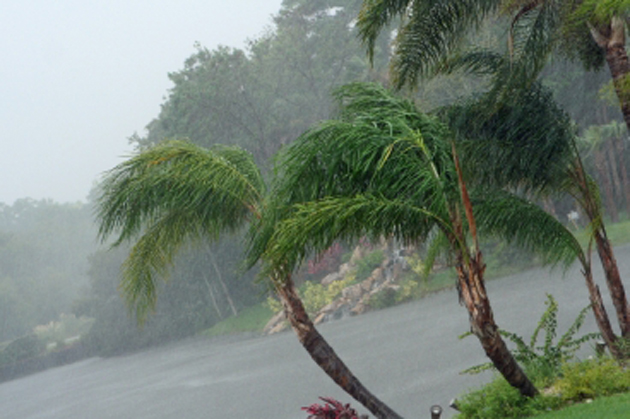
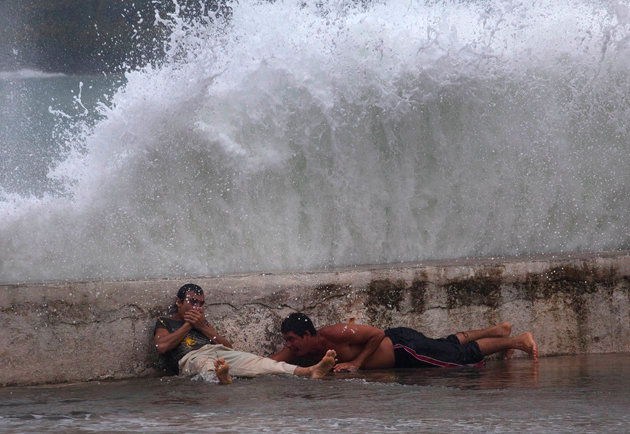
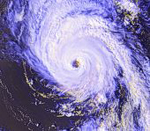



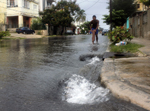

Comments
MIT Climate Change Study: Tropical Rains to Become More Extreme — No Comments